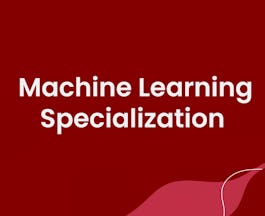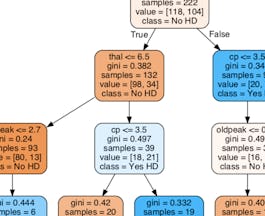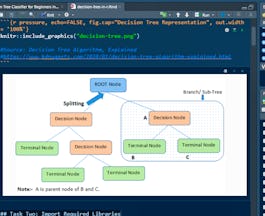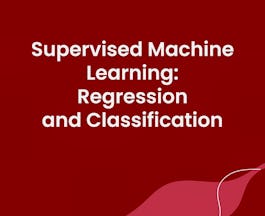Filter by
The language used throughout the course, in both instruction and assessments.
Explore the Decision Tree Course Catalog

Multiple educators
Skills you'll gain: Machine Learning, Machine Learning Algorithms, Applied Machine Learning, Algorithms, Deep Learning, Machine Learning Software, Artificial Neural Networks, Human Learning, Python Programming, Regression, Statistical Machine Learning, Mathematics, Tensorflow, Critical Thinking, Network Model, Reinforcement Learning

DeepLearning.AI
Skills you'll gain: Applied Machine Learning, Machine Learning, Machine Learning Algorithms, Algorithms, Artificial Neural Networks, Deep Learning, Network Model, Tensorflow, Machine Learning Software, Python Programming

Coursera Project Network

Skills you'll gain: Deep Learning

Coursera Project Network
Skills you'll gain: Machine Learning

DeepLearning.AI
Skills you'll gain: Machine Learning, Machine Learning Algorithms, Regression, Applied Machine Learning, Algorithms, Statistical Machine Learning, Mathematics, Critical Thinking, Machine Learning Software, Python Programming

University of Pennsylvania
Skills you'll gain: Finance, Financial Accounting, Financial Analysis, Accounting, Business Analysis, Cash Management, Decision Making, General Accounting, Cost Accounting, Data Analysis, Forecasting

University of Washington
Skills you'll gain: Machine Learning, Machine Learning Algorithms, Algorithms, Human Learning, Applied Machine Learning, Probability & Statistics, Statistical Machine Learning, Decision Making, Python Programming

Johns Hopkins University
Skills you'll gain: Algorithms, Applied Machine Learning, Data Analysis, Human Learning, Machine Learning, Machine Learning Algorithms, Statistical Analysis, Statistical Machine Learning, Machine Learning Software, R Programming

LearnQuest
Skills you'll gain: Machine Learning, Python Programming

Skills you'll gain: Big Data, Business Analysis, Data Analysis, Data Management, Data Visualization, Decision Making, Critical Thinking, Data Analysis Software, Data Structures, Exploratory Data Analysis

Skills you'll gain: Algorithms, Human Learning, Machine Learning, Machine Learning Algorithms, Applied Machine Learning, Machine Learning Software, Statistical Machine Learning, General Statistics, Python Programming, Regression
Searches related to decision tree
In summary, here are 10 of our most popular decision tree courses
- Machine Learning: DeepLearning.AI
- Advanced Learning Algorithms: DeepLearning.AI
- Classification Trees in Python, From Start To Finish: Coursera Project Network
- Build Decision Trees, SVMs, and Artificial Neural Networks: CertNexus
- Decision Tree Classifier for Beginners in R: Coursera Project Network
- Supervised Machine Learning: Regression and Classification : DeepLearning.AI
- Decision-Making and Scenarios: University of Pennsylvania
- Machine Learning: Classification: University of Washington
- Practical Machine Learning: Johns Hopkins University
- Machine Learning Models in Science: LearnQuest










